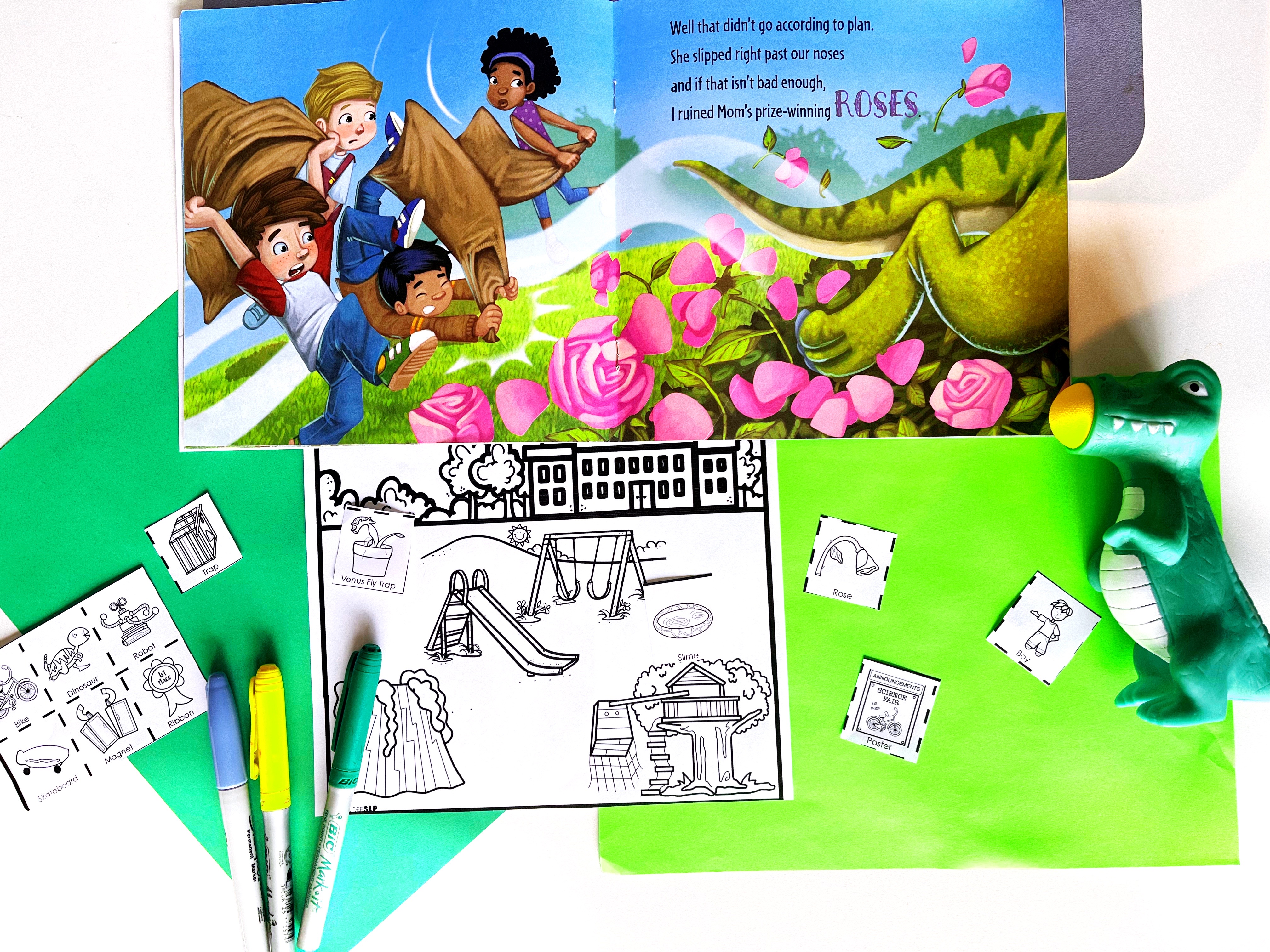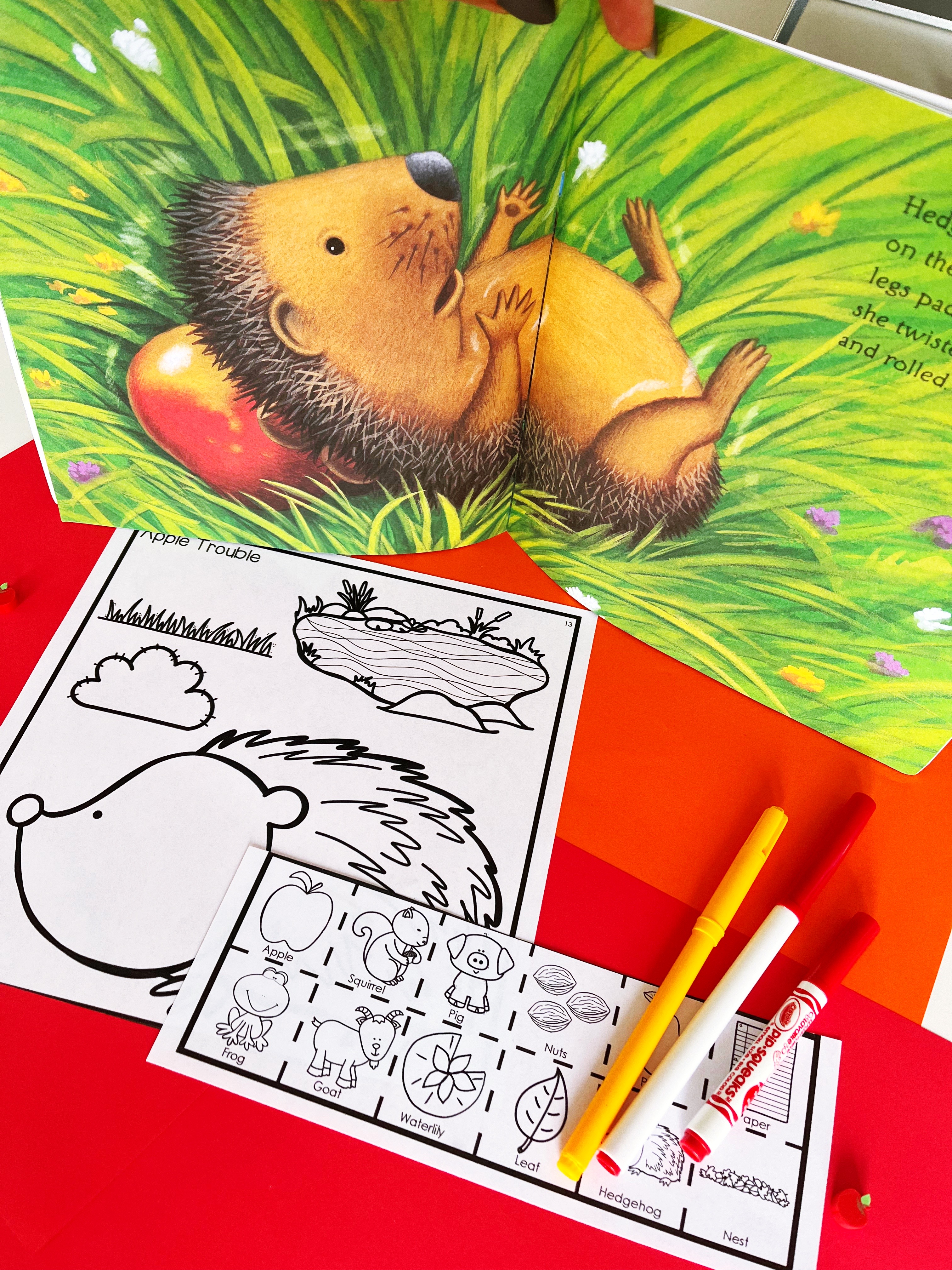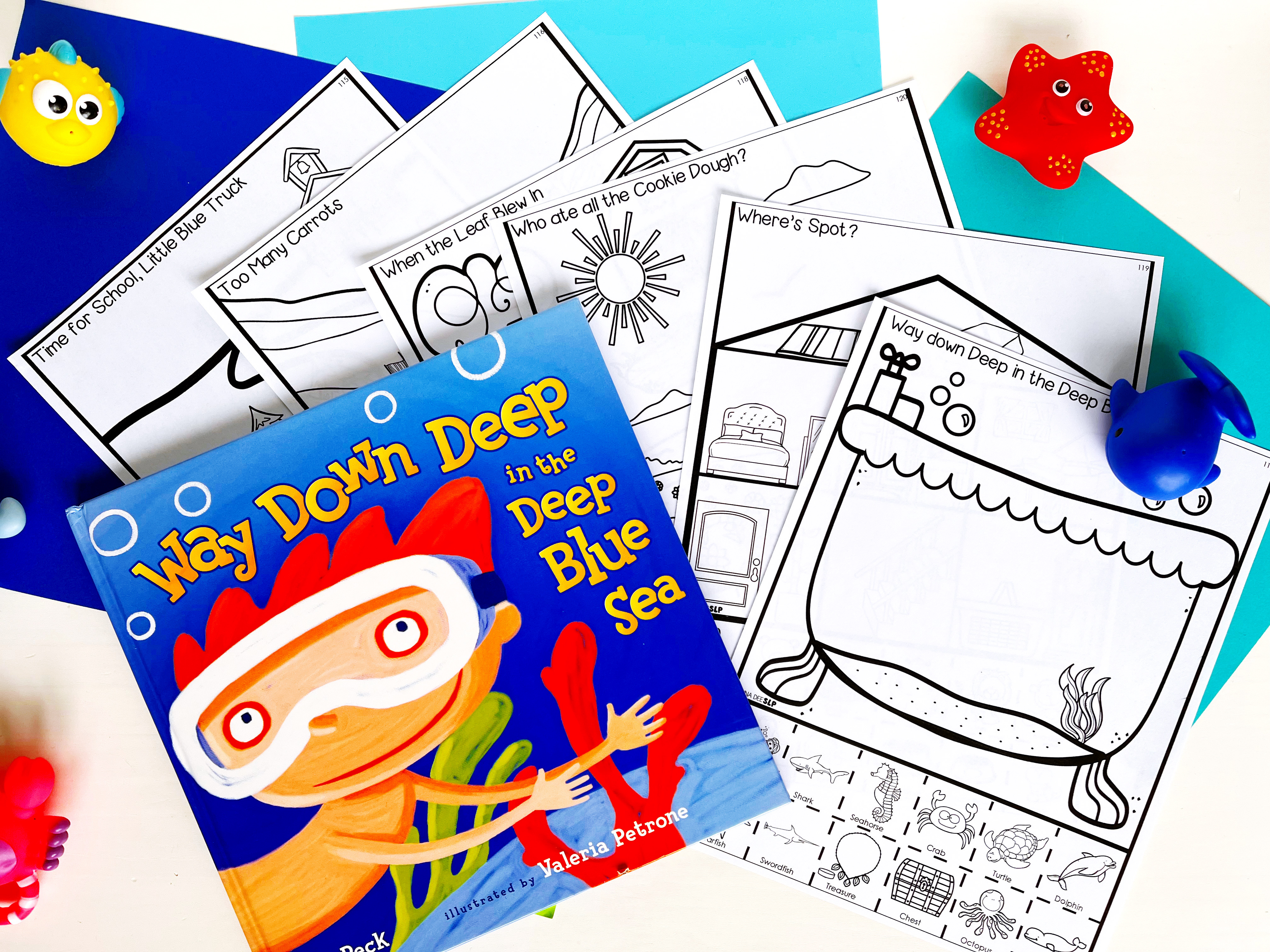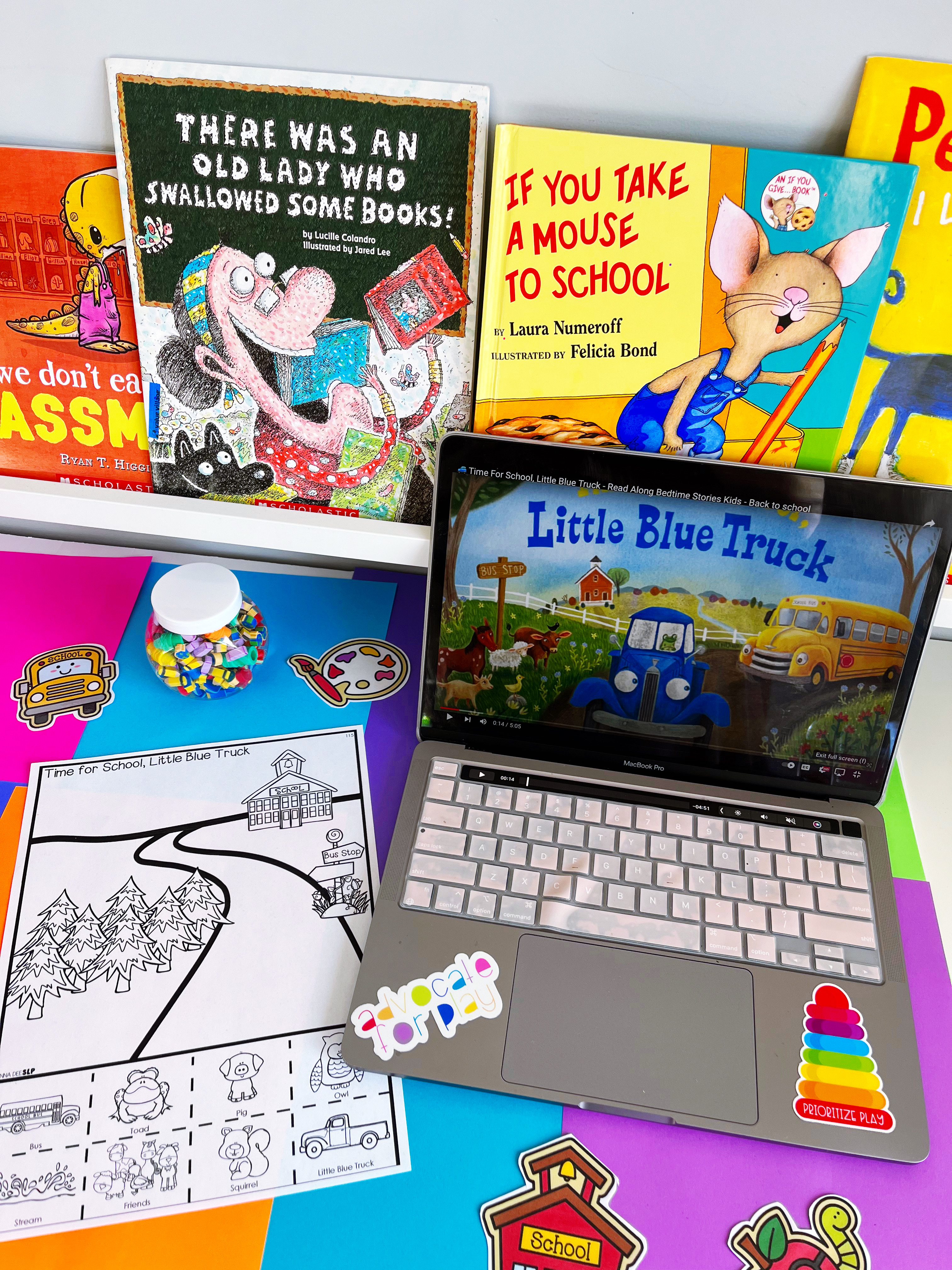Why No-Prep Book Companions Are the Secret to Stress-Free Preschool Speech Therapy

If you’ve ever sat in your therapy room five minutes before your next session, scanning the shelves and wondering what on earth you’re going to pull together — you’re not alone. We’ve all been there. The glitter from last week’s craft is still on the floor, you have three mixed groups back-to-back, and the idea of cutting, laminating, and sorting materials sounds like a hard no.
That’s where no-prep book companions swoop in like your favourite therapy sidekick. They give you structure, versatility, and engagement — without the prep panic.
What are no-prep book companions?
Let’s define our star term. A book companion is simply a set of materials (worksheets, visuals, activities) that pair with a specific storybook (or sometimes a bundle of books). A no-prep book companion means minimal (or zero) cutting, laminating, sorting - print & go. You open the PDF, print it, hand it to the kiddo, and away you go.
Why book companions (especially no-prep) really work
Engagement + predictability
Kids often love a familiar story. When you pair it with visuals/activities, you increase joint attention and participation.
Efficiency for you = more energy for them
No laminating, no scavenger hunt for picture cards, no “where did I put that file” stress. Print, open, go.
Language-rich context
Story-based activities give a context for language — vocabulary, verbs, story elements, emotions. Literature-based intervention is supported by research.
Flexibility for mixed ability groups
Because the structure stays consistent but the story changes, you can serve multiple students with one companion: one student might work on articulation, another on story retell, another on WH-questions — all using the same sheet.
Supports home carry-over & teletherapy
If you send home a story link + a companion page, you’ve just created easy homework or parent-guided practice. For teletherapy: screen-share the book, share the visuals, done.
How to use no-prep book companions in your therapy room
Here are a few simple ways to make them work for you:
Mixed groups
-
Everyone uses the same story but with differentiated goals.
-
While reading: pause, ask a question. Student A says a sentence retelling, Student B answers a WH question, Student C practices their target sound in a key word from the story.
-
After reading: all students fill in their companion pages — different targets, same story.
Tip: Anchor visuals on a “story mat” to engage students tactilely.
Push-in or classroom-therapy time
Grab a familiar story, bring your companion sheet. Because it’s no-prep, it’s transport-friendly. That makes it ideal for pop-in therapy sessions where you don’t have time to set up a full station.
Home practice or homework
Send home a link to the story’s read-aloud (YouTube, library digital copy) and the companion sheet. Parents don’t need to prep anything — just read and talk. Great for carry-over.
Teletherapy / virtual sessions
Screen-share the digital version of the book while both you and the student view the companion sheet (you can share via PDF or a slide). Minimal setup = more session time with the student.
Reusing across the year
One of the best things: once you have a framework you like, you can rotate stories. Keep the companion style consistent, swap in seasonal or thematic books. The kids get the structure, and you get variety.
Picking the right book companion and story
Here are some quick criteria to keep in mind (because yes, not all book companions are created equal!).
-
Story structure: Look for books with clear sequence (beginning-middle-end), strong visuals, repeated language.
-
Broad language targets: Choose companions that allow you to address vocabulary, WH questions, story retell, verbs.
-
Age/skill-level fit: For preschool/early intervention, simpler stories with big visuals work best.
-
Print/electronic format: If you do teletherapy or send home, digital versions matter.
-
Flexibility: Does the companion allow you to individualise goals?
-
Efficiency: Truly minimal prep (print and go) is ideal.
Once you’ve narrowed down, glance at your students’ goals. If you have one student working on /r/ in word-initial, one working on story retell, another on WH-questions — you’ll want a companion that supports all of that.
Popular story-themes & therapy target ideas
Here are some ready-to-use ideas to match your therapy goals with story companions:
-
Classic fairy tales (e.g., The Three Little Pigs, Goldilocks and the Three Bears) → sequencing, characters/emotions, cause & effect, verbs.
-
Seasonal stories (fall leaves, winter sled rides) → vocabulary tied to theme, WH questions, concepts (more/less, first/next/last).
-
Predictable repetitive texts (e.g., the “Old Lady” series) → articulation carry-over, retell, repetition for building fluency.
-
Interactive visuals (e.g., pieces to move, manipulative supports) → great for attention-challenged groups or younger kiddos.
Burst of creativity: For an “Old Lady” companion, use a paper bag for the lady, have students feed objects as you read (“The old lady swallowed a fly…” etc). Then stop and ask students: where did it happen, why did she do that? – great for comprehension and retell.
Common therapy targets you can hit with one sheet
Let’s get practical. Here are some targets you you can hit using a no-prep book companion:
-
Story sequence & retell: Use visuals or strips to map beginning-middle-end.
-
WH-questions: “Who swallowed the ___?”, “Why did he run away?”, “What happened after the wolf huffed?”
-
Vocabulary/verbs: Identify action words, new nouns. Use student-specific targets (e.g., /r/ initial “ran”, “rock”, “roof”).
-
Concepts: First/next/last, spatial concepts, basic adjectives.
-
Articulation/phonology: If a sheet includes target words or student’s sound words, you can embed drills.
-
Social/pragmatic: Use the story characters to discuss feelings (“How did the wolf feel?”, “What would you do if you were the pig?”).
-
Mixed group management: One story + shared visuals + differentiated tasks = mixed groups made simpler.
Evidence & research (yes, we’re SLPs, we love it)
I promised some research goodness. While book-companions as a specific format are less frequently studied, the broader category of interactive shared book reading has solid foundations:
-
Research shows that interactive shared book reading supports a wide range of early language skills (including vocabulary and oral language development).
-
A systematic review on shared interactive book reading interventions for young children with disabilities found positive effects on expressive language outcomes.
-
Practical blogs for SLPs emphasise the role of visuals, manipulatives, and interactive elements when using books in therapy.
Bottom line: While you might not find exactly the phrase “no-prep book companion” in major journals, the underlying mechanisms (shared reading + visuals + language-rich context) are evidence-based — good news for us, right!?
My favourite no-prep book companion workflow
Here’s a step-by-step that I use (and tweak) each week:
-
Choose the book of the week (e.g., a classic story or seasonal favourite).
-
Print the companion sheet (or load the digital version).
-
Pre-plan your differentiated targets:
-
Student A: story retell using visuals
-
Student B: WH questions + answer in full sentence
-
Student C: articulation/phonology target embedded in story vocabulary
-
-
Begin the session: Read the book together. Use the visuals from the companion as you go (pause, ask questions, move pieces).
-
Rotate tasks: After reading, each student completes their task from the companion sheet. While you work with one student, the others may work more independently.
-
Wrap-up: Retell together, ask reflection questions, maybe quick draw-and-tell.
-
Carry-over/home practice: Send the companion sheet (and/or a link to the book) home. Encourage the parent to read the story again and ask one or two WH questions.
Quick SLP Tips
-
Keep a “book companion file” in your therapy cupboard: print a few favorite companions ahead of time and tuck them into labelled folders (e.g., “Fall thematic”, “Classic fairy”, “Transport theme”).
-
Use sheet protectors + dry-erase markers with the companion visuals. That way you can revisit and reuse without re-printing.
-
For younger students, use manipulatives alongside the companion (e.g., toy pigs for The Three Little Pigs story, or leaves for a fall-themed story) to strengthen engagement.
-
For articulation/phonology groups: glance through the story and pick out 2–3 words that contain your students’ sounds — use those in the companion activities for extra drills.
-
In the classroom or push-in setting: use the companion visuals as a whole-group warm-up, then pull smaller groups to target specific tasks. The remaining students can complete an independent extension of the companion.
-
Build student buy-in: Let them choose which book companion you’ll do next week (from 2–3 options). Enthusiasm = higher participation.
-
Document efficiently: Because the framework stays consistent, you can reuse your session plan template each week and just swap in the companion/story details. Less planning time = more actual therapy time.
Bringing it all together
Okay fellow SLPs — here’s the wrap-up: When you lean into no-prep book companions for speech therapy, you’re giving yourself a win-win: structure + ease for you, engagement + language growth for your students. One story, multiple goals, less prep. That’s therapy magic.
Imagine this: you walk into your therapy room (or push-in spot), story in hand, companion sheet printed, kids engaged within minutes — no chaos, no scrambling, just good therapy. You feel calm. They feel supported. Everyone wins.
And let’s be honest — because you’re not spending hours prepping, you’ll actually have time for connection, laughter, meaningful language growth. That’s why we got into this field in the first place.
Ready to try it on?
If all of this sounds great - make sure to check out the Book Companions for No-Prep Preschool Speech and Language Therapy | Mega Bundle! It includes one sheet companions that you can tailor for all your students - with no prep! it features engaging stories that are hits with SLPs!
FAQ: No-Prep Book Companions, Explained
Q: What ages are best for these?
A: They’re ideal for preschool to early elementary - but flexible enough for any student who benefits from visuals and repetition.
Q: Do I need specific books to use them?
A: Nope! Each one includes a story link, so you can pull it up instantly without tracking down a hard copy.
Q: Can I use them with groups of different ability levels?
A: Absolutely. That’s where they shine! One story — many goals. You can individualize support while keeping everyone on task.
Q: How often can I reuse them?
A: Forever! Store them in sheet protectors and use dry-erase markers. It’s eco-friendly and prep-free all year long.
You might also like these related blog posts:
Let's stay connected!
Join the mailing list to receive updates with new freebies, promos, and specials!
Don't worry, your information will not be shared.
We hate SPAM. We will never sell your information, for any reason.







